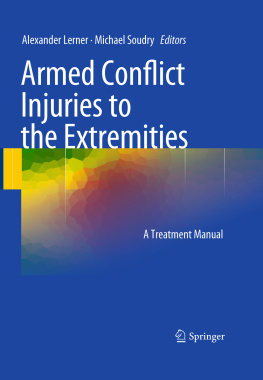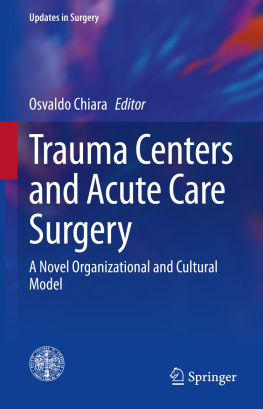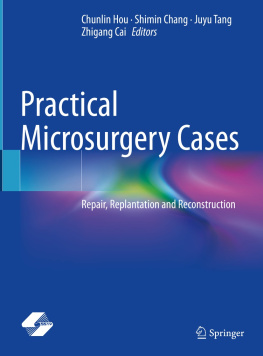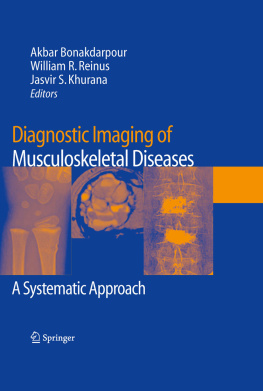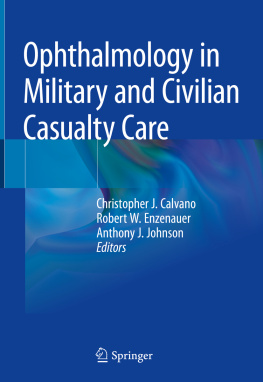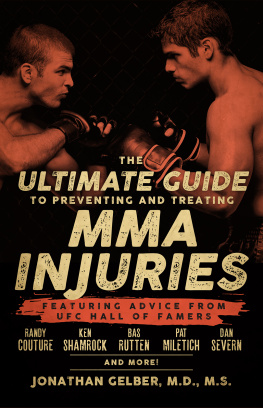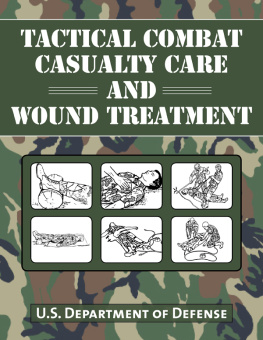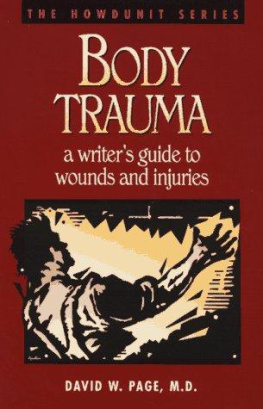1.1 Introduction
Modern armed conflict is notable in that the violence of todays weaponry and the profound severity of wounds create frequent situations in which trauma care providers are faced with situations that severely strain available resources. When those resources are strained beyond existing capacity to treat the sheer volume of wounded, the event becomes a mass casualty incident. This chapter addresses the organization of urgent medical aid for trauma, primarily in the military setting. However, the concepts and application are readily applicable to civilian settings, and the intent is to outline key aspects of a successful system for the spectrum of urgent medical care for the individual as well as the mass casualty event.
In consideration of the factors related to organization for care of urgent trauma patients, a continuum ranges from the solitary severely wounded patient, where every available resource may be utilized to preserve life and function, to the mass casualty situation, where the high numbers of injured overwhelm available resources. Modern military medical facilities and many civilian hospitals have adopted models of successful organizations and health systems directed toward a regional response to a massive terrorist event or natural disaster. We will also address individual considerations of triage and initial assessment of the immediate care patients. Recent armed conflicts internationally have focused on awareness of the requirement for not only military but civilian facilities and care providers to understand and be confident in addressing these potentially chaotic conditions. The focus in these events, where resources are constrained or overwhelmed, becomes that of preserving the most lives and doing the most good for the highest number of patients [].
1.2 Surge Capacity
The organizational structure for any center with potential for management of multiple casualties in rapid sequence or simultaneously is essentially identical for military or civilians. In Israel, where there are no fixed military hospitals, a strategic national approach has been quite effective [).
Table 1.1
Israeli Surge Capacity Essential Tasks []
1.Nationally coordinate resources central authority for defining and enforcing policies; ensuring sufficient equipment, supplies, and stockpiles are prepositioned |
2.Establish goals for each facilitys surge capacity |
3.Prepare standard procedures supplies, leadership, communication |
4.Continually monitor surge capacity daily reporting bed, ICU occupancy, critical resource availability including ventilators, CT scanners |
5.Design expandable facilities prepare nonstandard patient areas for contingencies- medical gas, ventilation, power supply |
6.Avoid emergency department overcrowding rapid throughput |
7.Promptly clear EDs immediate dispositions on notification |
8.Augment medical workforce maintain current staffing rosters, contact information, communication plans, and reporting centers |
9.Designate an adjoining site for minimal injury patients |
10.Distribute severely injured casualties among several hospitals |
11.Assign an EMS liaison to each receiving hospital direct link to hospital leadership to transmit numbers, types, arrivals of injured patients, and relay capacity |
12.Designate a triage hospital if the closest hospital is overwhelmed, it stops admitting and begins triaging to other facilities; focus changes to stabilizing and transport |
13.Frequently conduct rigorous full scale drills annual full-scale exercise to include surgery times, resource elimination, security, and possible Weapons of Mass Destruction involving nuclear, biologic, and chemical hazards. Mandatory after action reviews |
14.Continually maintain surge capacity establish balance between economic and cultural barriers; create incentives for hospital preparedness |
Without a surge capacity, any hospital facing reception of multiple urgent casualties is ineffective. These guidelines present a validated list of priorities to enable the facility to be prepared. Preparation, however, only begins with development and maintenance of surge capacity. Additional factors often dictate the effectiveness once reception has begun. The resources available are critical, and include broad categories of logistic supply blood products, ventilators, surgical equipment, and capacity to reprocess sterile material; space; personnel, and their training or level of preparation; communication capabilities; information technology systems; and medical records. Command and Control of the facility, entry access to the hospital, and security for both patients and hospital personnel are additional keys to success.
Any aspect of operating the facility may become the constrained resource, and therefore all sections of the organization play a critical role in preparation, execution, and recovery []. Finally, planning requires consideration for rapid recruitment of external resources (personnel, space, and equipment) and hospital staff support in the context of sustainment, rest cycles, emotional protection/resiliency. Many civilian trauma centers never experience a mass casualty incident, and very few care providers will ever participate in multiple events. These are stressful and life changing and consideration of the personal impact on the hospital staff is an extremely important area when the team faces these situations on a recurrent basis.
1.3 Leadership
Leadership is the paramount factor that influences the outcome of an event. When the leader is strong, the organization yields to the direction and confidence of the leader. In the absence of a strong leader, a well defined organizational structure can preserve the institution until a leader emerges. At the bedside level, a well trained and confident trauma treatment team begins with the team leader, most often an emergency physician or surgeon. The team includes an airway expert; one or two medics who establish IV access; a procedure expert, addressing chest tubes, arterial access, and more difficult intravenous access; and a medical recorder (Fig. ).

